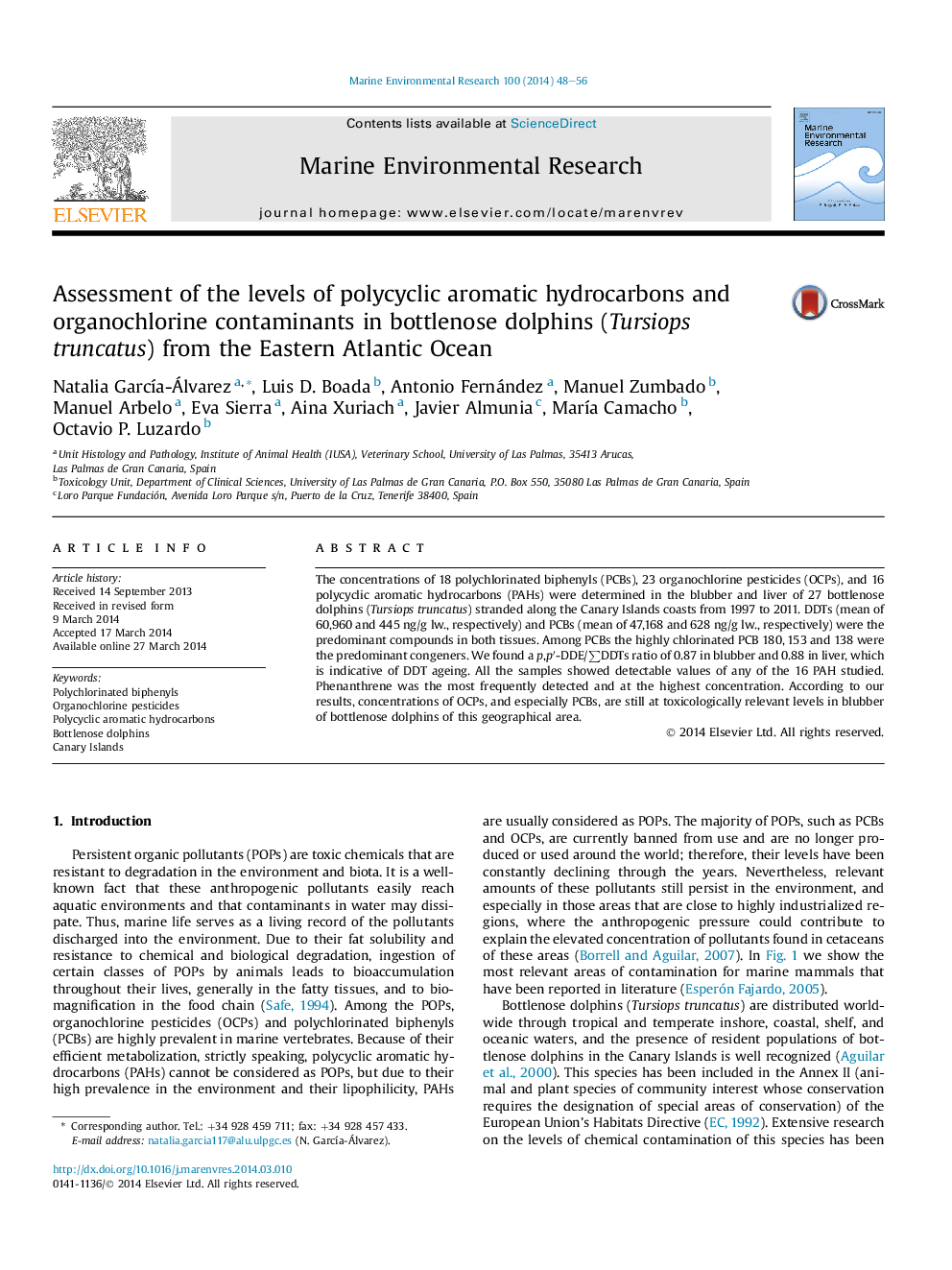| Article ID | Journal | Published Year | Pages | File Type |
|---|---|---|---|---|
| 4550773 | Marine Environmental Research | 2014 | 9 Pages |
•Background levels of POPs in stranded bottlenose dolphins of the Canary Islands.•This is one of the scarce reports on PAHs levels in cetaceans.•Toxicologically relevant concentrations of dioxin-like compounds in all the animals.
The concentrations of 18 polychlorinated biphenyls (PCBs), 23 organochlorine pesticides (OCPs), and 16 polycyclic aromatic hydrocarbons (PAHs) were determined in the blubber and liver of 27 bottlenose dolphins (Tursiops truncatus) stranded along the Canary Islands coasts from 1997 to 2011. DDTs (mean of 60,960 and 445 ng/g lw., respectively) and PCBs (mean of 47,168 and 628 ng/g lw., respectively) were the predominant compounds in both tissues. Among PCBs the highly chlorinated PCB 180, 153 and 138 were the predominant congeners. We found a p,p′-DDE/∑DDTs ratio of 0.87 in blubber and 0.88 in liver, which is indicative of DDT ageing. All the samples showed detectable values of any of the 16 PAH studied. Phenanthrene was the most frequently detected and at the highest concentration. According to our results, concentrations of OCPs, and especially PCBs, are still at toxicologically relevant levels in blubber of bottlenose dolphins of this geographical area.
